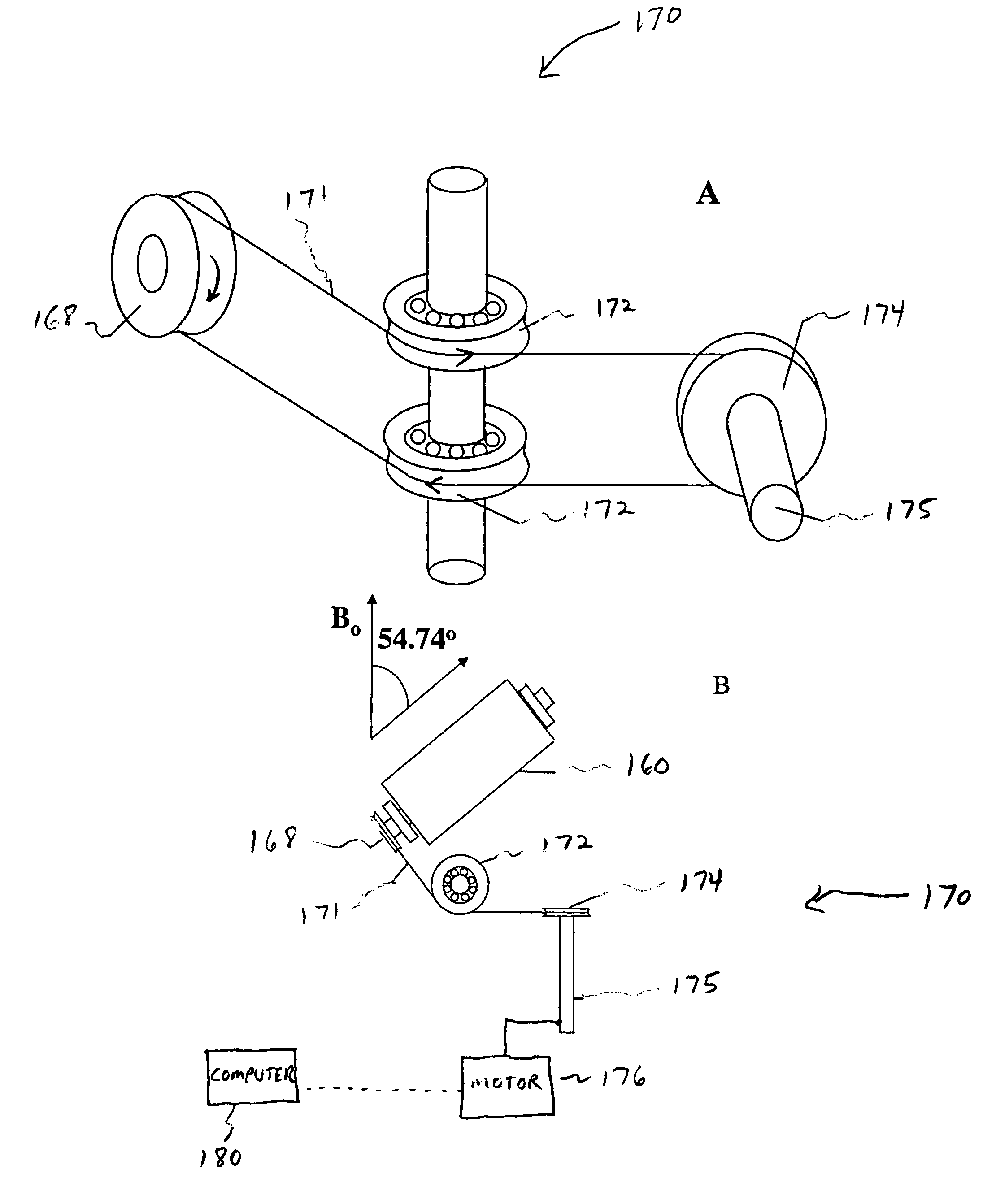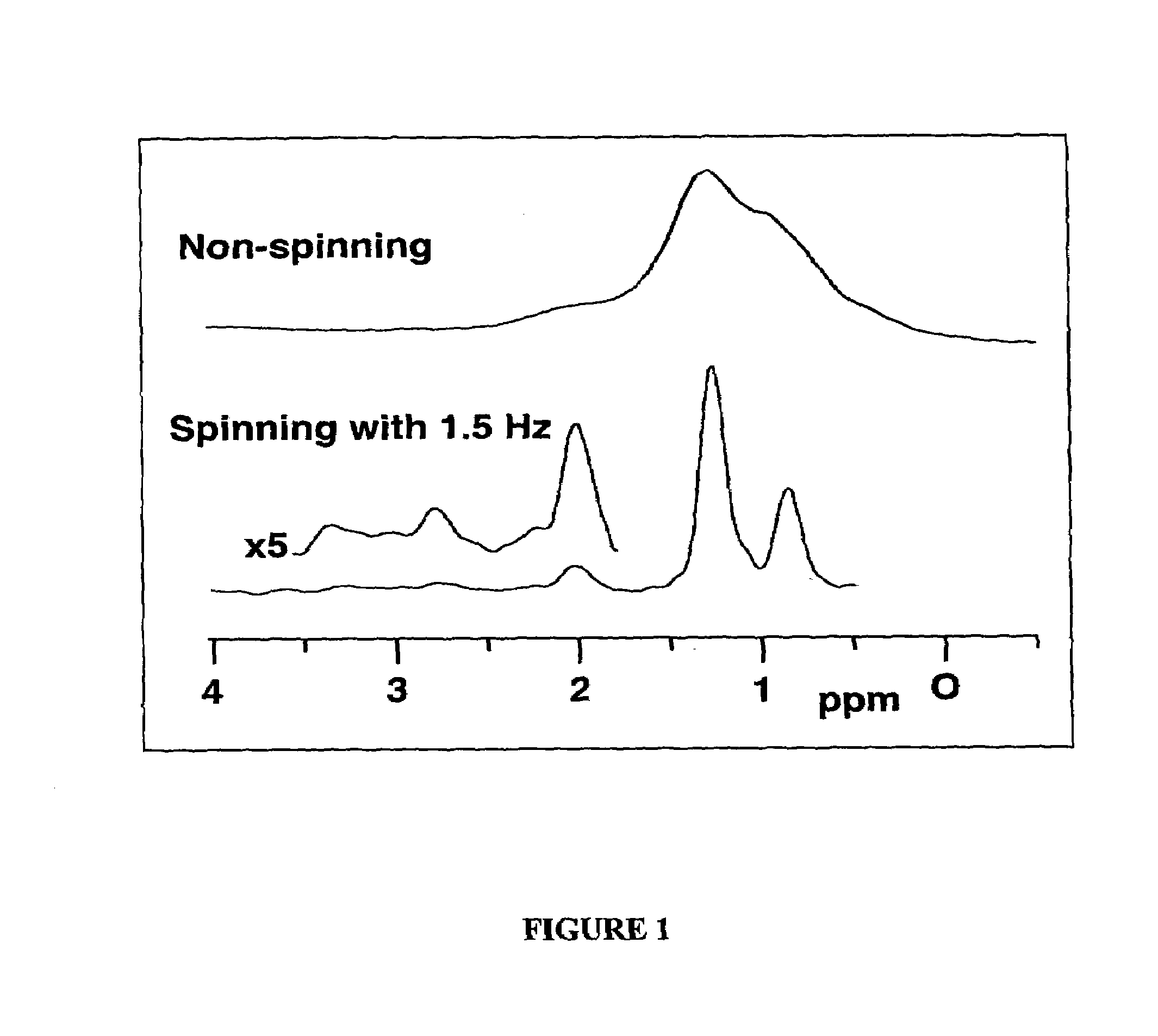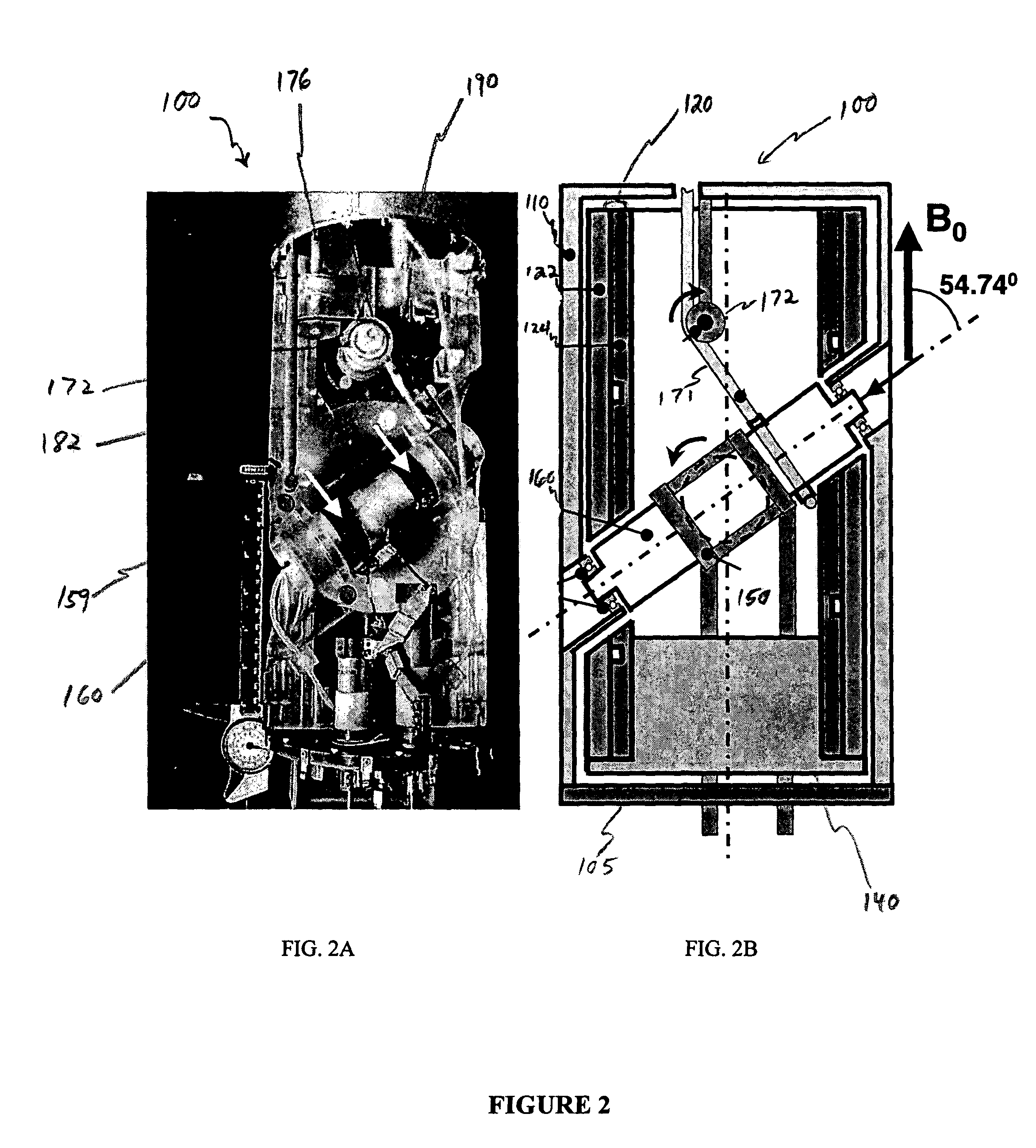Advanced slow-magic angle spinning probe for magnetic resonance imaging and spectroscopy
a technology of magnetic resonance imaging and spectroscopy, applied in the field of new slow magic angle spinning probes, can solve the problems of affecting the qualitative and quantitative spectral analysis of static samples, hampering the quantitative, sometimes even qualitative, analysis of spectra, and often suffering from poor resolution
- Summary
- Abstract
- Description
- Claims
- Application Information
AI Technical Summary
Problems solved by technology
Method used
Image
Examples
example 1
[0055]1H NMR experiments were performed using a horizontal wide-bore (30 cm) 2 Tesla Oxford magnet tuned to a proton Larmor frequency of 85 MHz, in combination with a Varian (Palo Alto, Calif.) Unity Plus console. In the present embodiment (FIG. 2A), the probe 100 had an O.D. of 120 mm, to fit in a standard gradient probe (not shown) inserted into the magnet. The rotor 160 comprised a custom-made (ARRK Product Development Group, Beaverton, Oreg.) epoxy photopolymer cylindrical mold 163 as described hereinabove and illustrated in FIG. 3. The mold 163 was cut into two halves to allow insertion of an animal specimen, in this case, a live, anesthetized female BALBc mouse. In the instant case, only the center part of the animal was probed and investigated. The outside diameter of the gradient probe was 220 mm and was shimmed using a shim probe (not shown) at room temperature. The rotor assembly 160 included a driving assembly 170 having a 1 / 12th HP motor (Baldor Series 18H AC Flux Vector...
example 2
[0058]FIG. 2B shows a picture of the probe 100 for a slow MAS experiment according to a second embodiment of the present invention. The probe 100 may be adapted and configured with incorporated gradient coils and with a longer rotor 160 to probe a whole body volume of a mouse positioned at the center of the magnet and the probe 100. For example, the outside diameter of the probe 100 without the gradients (FIG. 2A) is restricted to 120 mm, as it has to fit in a standard gradient probe with the same I.D. and an O.D. of 220 mm. By incorporating the gradients into the MAS probe, the standard gradient probe is no longer needed, which means that the diameter of the MAS-gradient probe can be increased to 220 mm. This is more than sufficient to perform research on all parts of a mouse, and probably a larger animal such as a rat as well. In fact, for a mouse MAS probe 100 the O.D. can be reduced to 150 mm, which makes it possible to mount this probe 100 in many high-field magnets (up to 12 T...
example 3
[0067]A freshly excised rat liver was analyzed using a 1 Hz PHORMAT experiment with a 7 T magnetic field. Results were compared with those previously obtained. In the present case (liver), the anisotropic line width of the 0.9 ppm peak was found to be 150 Hz, whereas in the mouse, a value of 60 Hz was observed in the 2 T field. As noted previously, the line broadening in biological objects is dominated by magnetic susceptibility and the anisotropic line width is approximately proportional to the external field. As a result, at 7 T, a line width of 210 Hz is predicted, which is larger than that found in the liver. The increased broadening in the mouse may be due to signals arising from tissues close to cavities like the lungs, where the susceptibility gradients are presumably larger than in the more homogeneous liver sample. The isotropic line width in the excised liver is 15 Hz, close to the 13 Hz width measured in the live mouse at 2 T. This is in agreement with the fact that the i...
PUM
| Property | Measurement | Unit |
|---|---|---|
| frequency | aaaaa | aaaaa |
| frequency | aaaaa | aaaaa |
| frequency | aaaaa | aaaaa |
Abstract
Description
Claims
Application Information
 Login to View More
Login to View More - R&D
- Intellectual Property
- Life Sciences
- Materials
- Tech Scout
- Unparalleled Data Quality
- Higher Quality Content
- 60% Fewer Hallucinations
Browse by: Latest US Patents, China's latest patents, Technical Efficacy Thesaurus, Application Domain, Technology Topic, Popular Technical Reports.
© 2025 PatSnap. All rights reserved.Legal|Privacy policy|Modern Slavery Act Transparency Statement|Sitemap|About US| Contact US: help@patsnap.com



